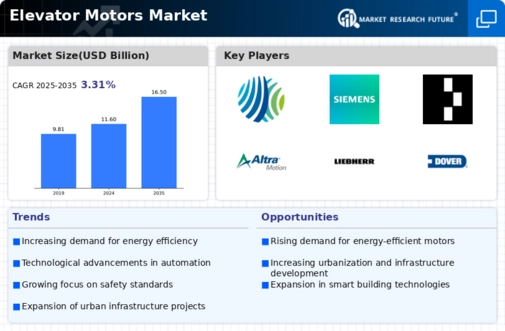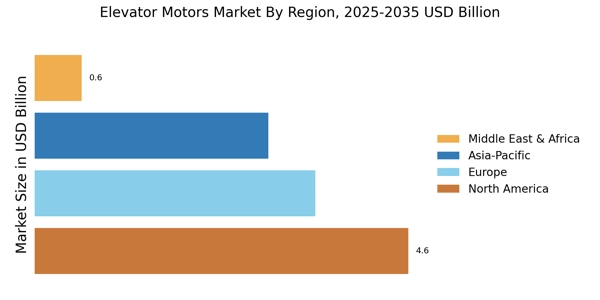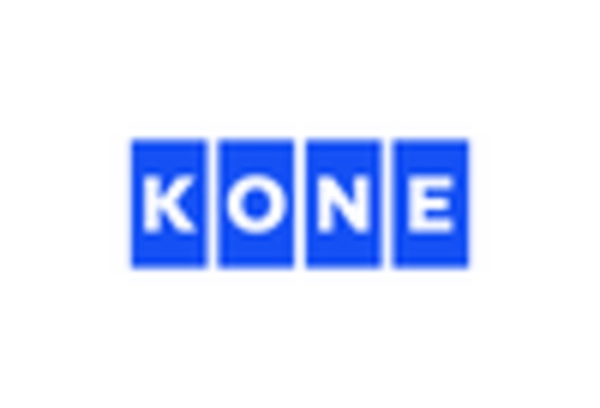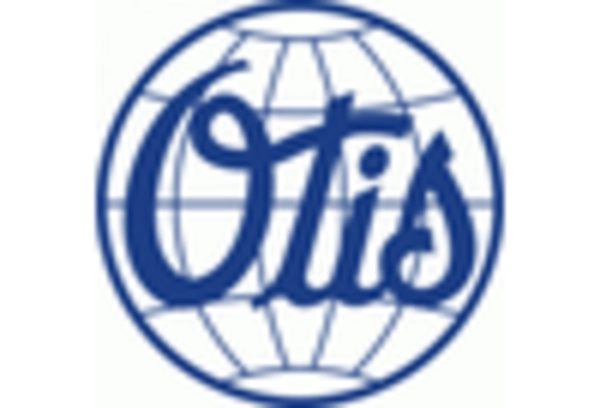Rising Urbanization
The Elevator Motors Market is experiencing a notable surge due to increasing urbanization. As populations migrate towards urban centers, the demand for high-rise buildings escalates, necessitating efficient vertical transportation systems. This trend is reflected in the construction of skyscrapers and multi-story residential complexes, which require advanced elevator systems. According to recent data, urban areas are projected to house over 68% of the world's population by 2050, driving the need for reliable elevator motors. Consequently, manufacturers are focusing on developing energy-efficient and high-performance motors to meet this growing demand, thereby enhancing their market presence in the Elevator Motors Market.
Technological Advancements
Technological advancements play a pivotal role in shaping the Elevator Motors Market. Innovations such as regenerative drives, IoT integration, and smart control systems are revolutionizing elevator operations. These technologies not only improve energy efficiency but also enhance user experience through features like predictive maintenance and real-time monitoring. The market for smart elevators is expected to grow significantly, with estimates suggesting a compound annual growth rate of over 10% in the coming years. As manufacturers invest in research and development, the Elevator Motors Market is likely to witness a shift towards more sophisticated motor systems that align with modern building requirements.
Expansion of Infrastructure Projects
The expansion of infrastructure projects is a critical factor propelling the Elevator Motors Market. Governments and private sectors are investing heavily in infrastructure development, including transportation hubs, commercial complexes, and residential buildings. This investment is expected to create a robust demand for elevator systems, subsequently driving the need for advanced elevator motors. With infrastructure projects projected to increase significantly in the next decade, the Elevator Motors Market is poised for substantial growth. Manufacturers are likely to capitalize on this trend by offering innovative motor solutions that cater to the specific needs of large-scale projects.
Government Regulations and Standards
Government regulations and standards are increasingly influencing the Elevator Motors Market. Stricter safety and energy efficiency regulations are being implemented across various regions, compelling manufacturers to innovate and comply with these guidelines. For instance, energy efficiency standards set by regulatory bodies are pushing for the adoption of eco-friendly elevator motors. This shift not only ensures compliance but also enhances the marketability of products. The Elevator Motors Market is thus witnessing a transformation as companies adapt to these regulations, leading to the development of motors that are both compliant and competitive in terms of performance.
Growing Demand for Energy Efficiency
The growing demand for energy efficiency is a significant driver in the Elevator Motors Market. As energy costs rise and environmental concerns become more pronounced, building owners are increasingly seeking solutions that reduce energy consumption. Elevator motors equipped with energy-saving technologies, such as variable frequency drives, are gaining traction. Reports indicate that energy-efficient elevators can reduce energy consumption by up to 50% compared to traditional systems. This trend is prompting manufacturers to prioritize the development of motors that not only meet performance standards but also contribute to sustainability goals, thereby enhancing their appeal in the Elevator Motors Market.


















Leave a Comment